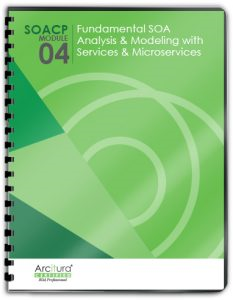SOA Patterns > Basics > SOA Methodology > Service Models > Service Models and Service Layers
Service Models and Service Layers
Service models are used to classify units of logic according to the nature of the logic itself.
A service should only contain units of logic that belong to the same service model. Furthermore, service models are used to provide organization and structure to a service inventory through the introduction of service layers. A service layer groups services belonging to the same service model to facilitate the governance and management of a service inventory.
A given service inventory will usually contain multiple services that are grouped based on each service model. A service layer is therefore a collection of services related by the type of logic they encapsulate. Service layers help to establish logical domains that support meaningful governance. As an example, due to their intended high levels of reuse, the evolution of agnostic entity services must be controlled as the potential consequence of incompatible changes to their service contracts may be widespread.


The common service layers, each of which is based on a service model.
Although it is common to model a service inventory with all four layers, it is not absolutely required that they be used at the same time. The rule of thumb is that at least two layers exist. Given that it is generally desirable to have one layer abstract non-agnostic logic, for the purposes of driving a composition, the task service layer can be applied together with either the utility service layer or the entity service layer.
For example, the task + utility layer combination may be suitable when an organization does not have mature business entity documentation in place and cannot afford to invest in creating these models.

An example of the task + utility layer combination.
The task + entity layer combination may be suitable when it is determined that the enterprise infrastructure cannot handle large service compositions. In this case, the organization may choose to invest in building entity services that also include the required utility logic to carry out all processing, and then perhaps add a utility layer later on by extracting utility logic into a separate set of services.

An example of the task + entity layer combination.
Even though they are technically possible, there are some combinations that are not recommended. For example, an inventory modeled only with the utility + entity layer combination may be insufficient because there is no abstraction of non-agnostic logic within services. In these cases, the non-agnostic logic must exist in traditional applications and the creation and use of agnostic services is likely due to an application modernization effort.
Another approach that is not recommended is a task + microservice layer combination or a single task service layer. A service inventory based on just only non-agnostic services makes little sense because it would essentially be comprised of a series of independent, silo-based applications. Although it is common to find a set of single-purpose programs that represent some or all of an IT enterprise, from a service-orientation perspective, there is not much gain to this approach. One or more agnostic service layers are required to establish services as reusable enterprise resources.

An example of a task service + microservice layer combination, which is reminiscent of a silo-based application.
